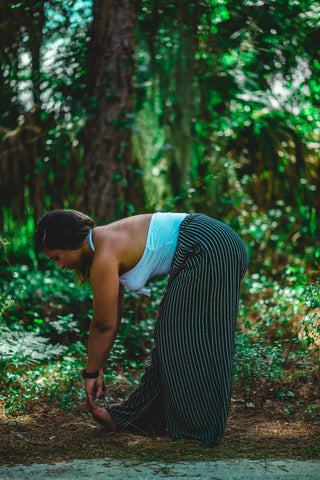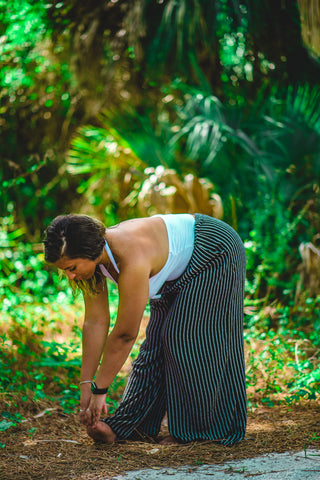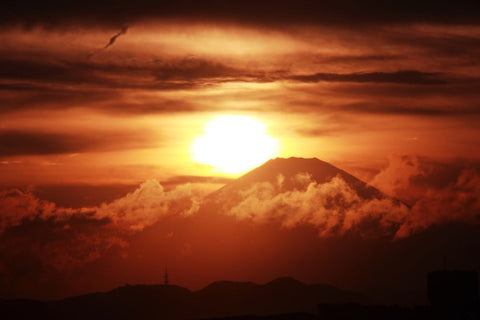What’s Up with Stickers? An Ode
They have endured the test of time. The humble sticker has been around for some time...
Continue readingYour cart is currently empty!

They have endured the test of time. The humble sticker has been around for some time...
Continue readingScavenger Hunt Bingo for hiking Colorado 14ers
Continue readingEveryone has gone through pain after a long hike or an endurance activity. The way our bodies feel after an adventurous activity can set standardsfor how we need to treat it before and after we participate in these endeavors. Consider how your body feels. Yoga and meditation can help you in preparation for a big day of hiking.
Taking the time to become more mindful of our bodies before hiking will be critical to how we feel afterwards. Below, I have comprised some basic poses and meditations that really help to make space within our bodies and minds before strenuous activities.
5 Poses for Success:

Givenchy Jones Photography

Givenchy Jones Photography

Givenchy Jones Photography

Givenchy Jones Photography

Givenchy Jones Photography

Givenchy Jones Photography

Givenchy Jones Photography
Considerations: Hold the poses for as long as needed for your body individually. Use the ground or whatever is around you for support if needed. There is no “set” place you should feel a stretch, you feel it where your body needs it. Have fun with this—you’re taking the time to prepare for a great hike!

Givenchy Jones Photography
Meditation:
Take 5 minutes before your hike to think about the reason why you are there that day. Listen to the sounds around you and become immersed in your position within the world.
___________________________________________________________________________
It is important to take time for ourselves before strenuous activities. Yoga helps us to find our balance to ensure our bodies are ready for the journey ahead. Building these tools (yoga poses and meditation) into our schedule can be fundamental to our success. Try a little love for your body before a hike and see how you feel afterwards!
Namaste | Alexis
Alexis is the Founder of Aesthetic Chaos, a blog that focuses on adventure and well-being. Alexis is currently obtaining her 200-yoga teacher training certification at St. Pete Yoga, a Yoga Alliance registered yoga school. You can visit her website at aestheticchaos.net.
Photos by Givenchy Jones Photography
Continue readingThere are many ways to celebrate the New Year around the world. And…there are a surprising number of similarities – family and friends, good food, fireworks, reflection, etc.
In East Asia, many celebrate hope and renewal by watching the sunrise on New Year’s Day. This is typically done in large groups on mountaintops, beaches or scenic valleys.
In Japan (and other mountainous countries of East Asia), large groups will endure the bitter cold to summit a mountain and greet the rising sun. It is called Hatsuhinode, and is Japanese for the welcoming of the first sunrise of the New Year.

A group around Colorado Springs in southwest Colorado has a similar practice of enduring the cold to hike to the top of a mountain. The group is called the AdAmAn Club (http://adaman.org). Rather than watch the sunrise, the group’s purpose is to light fireworks at the summit at midnight.
The AdAmAn Club was formed in 1923 after a group of 5 men dubbed “The Frozen Five” decided to hike to the top of Pikes Peak to set off fireworks on New Year’s Eve. The five men were Fred and Ed Morath, Fred Barr, Willis Magee and Harry Standley.
So it was, that on December 31st, 1922, the Frozen Five created “fire on the mountaintop” that could be seen for miles around and created quite a stir. Two of the original five, brothers Fred and Ed Morath suggested the name “AdAmAn” for a rule that only one new member could be added each year. The tradition has lasted for over 90 years and the club gets bigger.
Pikes Peak is “America’s Mountain”, one of the 53 Colorado 14ers (peaks above 14,000 feet) and tallest of the southern Front Range at 14,115 feet. Pikes is named from explorer/adventurer Zebulon Pike, who interestingly enough, did not summit the peak. (Side note: This author thinks Zebulon is such a cool name, that if he had another son, he’d seriously consider naming him Zebulon.)
The summit is accessible by a cog railway, a paved road and Barr hiking trail. Pikes Peak is only one of two 14ers accessible by paved road. The other is Mount Evans.
Pikes Peak earns the moniker “America’s Mountain” from its’ sheer popularity - hosting tourists, climbers, researchers and racing fans. The Pikes Peak road is famous for the International Pikes Peak Hill Climb motor race, USA Cycling Hill Climb National Championships and Pikes Peak Cycling Hill Climb.
The icy Barr Trail is the eastern route the AdAmAn Club takes to reach the top and is accessible to the public for climbing most of the year. Fireworks in the splendor that is America’s Mountain celebrates the majesty of our great country and gives fitting backdrop to occasion. Happy New Year!
Continue readingThe recent eruptions in Hawaii with Mount Kilauea have a lot of people thinking about volcanoes lately and for good reason. Over 2,000 people are being evacuated in Hawaii and scientists are wondering if the rumblings under foot could be grander in scope.
Kilauea sits in the midst of the Ring of Fire, a horseshoe-shaped belt of volcanic activity that stretches over 25,000 miles in the Pacific basin. [i]Roughly 450 volcanoes are in the Ring of Fire comprising of 75% of the world’s active and dormant volcanoes.
If the Hawaii activity were a symptom of a systemic issue, folks in the Pacific Northwest are worried. There are 13 volcanoes on the West Coast including Mounts Rainier and Hood. We only have to look back to 1980 when Mount ST Helens tragically blew, killing dozens and spreading ash across much of the United States. [ii]
So far, that fear is allayed, as scientists have not detected any abnormal readings of increased volcanic activity on the West Coast. This gives any hiker pause when climbing a mountain that might be active. It’s like climbing a rickety ladder - you just don’t feel safe.
Many of the mountains we climb are in fact volcanic in origin. Of the 7 Summits, two are volcanic – Kilimanjaro (19,341’) in Africa and Elbrus (18,510’) in Russia.
 (Kilimanjaro – Trekkinghero.com)
(Kilimanjaro – Trekkinghero.com)
Volcanoes fall into one of three statuses: Active, dormant and extinct. The later not having activity for over 10,000 years, so that’s comforting.
Now that you know about volcanic mountains, what are the other types of mountains? Not all mountains are created the equal. Each mountain and range has a different story. Pressure, type of strata (rock), erosion, volcanic forces all play a role. In addition to volcanic mountains, there are four other types: fold, fault-block, plateau and dome.
Fold mountains are the most common. They are caused when tectonic plates crash into each other. Huge amounts of pressure and friction create these huge monuments of our planet. They are the largest in size and form long ranges. The best examples are the Rocky Mountains and the Himalayas.

(Rocky Mountains – WikiTravel.org)
Fault-block mountains are formed where a fault or crack pushes up rocks. On one side of the fault, the earth drops down sharply. On this side of the mountain, the sides are often sheer drops – fun for rock climbers. The Sierra Nevada range is a prime example.

(Sierra Nevadas – Phys.org)
Plateau mountains and dome mountains form with the help of mother nature (mainly rain) and billions of years of erosion. Plateau mountains are formed usually near fault-block mountains and have a flat top. The Catskills of New York and mountains in New Zealand are plateau mountains.

(Matiri Range, New Zealand – Teara.govt.nz)
Dome mountains like plateau mountains are formed by magma pushing up. However unlike plateau mountains, the magma dome is what is seen, not the rock above it as in a plateau. Over billions of years, erosion wears away around the base of the dome. The Adirondacks of New York are dome mountains. [iii]

(Algonquin Peak, Adirondacks – Peakbagger.com)
Although most mountains that are in danger of exploding anytime soon will have clearly posted warnings, it’s good to know the differences on how one mountain was formed versus the next one. It gives you a better appreciation when you are standing on top.
Sources:
[i]https://en.wikipedia.org/wiki/Ring_of_Fire
[ii]http://epaper.dallasnews.com/infinity/article_popover_share.aspx?guid=2e7a5d6a-6668-47ad-b6dd-99f65ad03854
[iii]https://www.universetoday.com/29771/types-of-mountains/
Continue readingSummer is the preferred time for hiking for the majority of hikers, not only because of the sun and warmth, but also because the daylight hours are longer. The summer season is usually vacation time and hikers can spend more time hiking and exploring old and new trails for longer. But when the temperatures start rising into the triple digits, most people prefer to stay at home safe and away from the scorching heat. There are ways though that you can continue enjoying hiking even when the temperatures are so high that you feel like crawling into your freezer instead.
Here are 8 basic rules for hiking in the summer, which if you follow closely will allow you to actually enjoy and survive hiking even in the hottest days of the year:
Continue readingIn a recent TED Talk, Anthropologist Amber Case talks about how technology is evolving us. She shares her concern about the psychological effects of the ambivalent relationship we have with our digital devices. “What I’m really worried about is that people aren’t taking time for mental reflection anymore.” Says Case.
So true. I witness many of my friends and colleagues rush through life and lose perspective of what’s important to them. It’s easy to lose sight of what matters most to us. Moreover, our needs, goals and desires change over time. That’s exactly why I urge you to unplug and “take a hike!”
Continue readingI’ve always been impressed by the boundless energy of youth. Not every family is forged from the stuff of mountain goats. Here are some tips to help make hiking with kids a little more enjoyable.
Continue readingIt was July. From my office window, I could see the impossibly blue Texas sky and imagine how hot it was outside the comforts of air conditioning. The high was 99 for the day – a typical summer. On days like this, I pine for the cooler alpine climes.
That’s when I got an email from Spencer Madden (http://mountainobsession.com). It read, “Hey Sherpa Bill! Spence from Mountain Obsession here. I am starting an adventure after quitting my corporate job. I will be down in Sept crushing 14ers.” Spence did what many of us only wish we have the courage to do. He quit his corporate job and set off on an adventure of a lifetime.
Continue readingWhether you’re a new hiker or a veteran, a good hike takes time to plan out thoroughly. Thanks to the advent of smartphones, planning hikes is now much easier, as apps are more than capable of assisting users in every step of their trip. If you’re a smartphone user, here are three apps that you might want to carry around on your next big adventure.
Continue reading